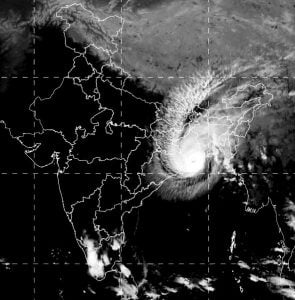Bhubaneswar: The frequency of cyclone formation over Bay of Bengal and Arabian Sea has been above normal in the past two years, Union Minister for Science and Technology and Earth Sciences Dr Harsh Vardhan has informed Lok Sabha.
The minister, however, added that there has been no significant increasing trend in cyclogenesis in the two regions when long term data is considered.
Cyclogenesis is the probability of development or strengthening of an area of low pressure into a cyclone.
Concern For Odisha
Odisha has a reason to worry about cyclones forming over Bay of Bengal given the number of systems that occur annually and the recent experience with natural calamities like Fani which left behind a trail of devastation.
This year, though, more cyclones formed over Arabian Sea as compared to Bay of Bengal, said Director Bhubaneswar Meteorological Centre, HR Biswas. Bay of Bengal has a history of generating deadly systems, the New Indian Express reported.

Blame Global Warming
Experts said warm temperatures are occurring more often and over longer periods of time which is a result of gradual warming on a global scale and resulted in a net increase in ocean temperatures. Warmer ocean temperatures allow stronger storms to form.
These conditions are exacerbated by global mechanisms including El Nino and the Indian Ocean Dipole which concentrates warm ocean waters in smaller geographic areas.
Regional Met officials said one of the reasons why tropical cyclones are more prone to form over Bay of Bengal is that its surface temperature is higher than that of the Arabian Sea.

Data Speak
According to private weather forecaster Skymet, there were 14 disturbances in 2018 out of which the number of cyclones formed was seven. In 2019, there were nine disturbances and seven of these became cyclones, making the year with the highest conversion rate.
Recent data reveals that the number of cyclones as well as severe cyclones in Bay of Bengal and Arabian Sea has increased by almost 11 per cent in the last one decade.
Moreover, the rising trend has shown more growth in the last five years with an increase of about 32 per cent, it said.


Comments are closed.